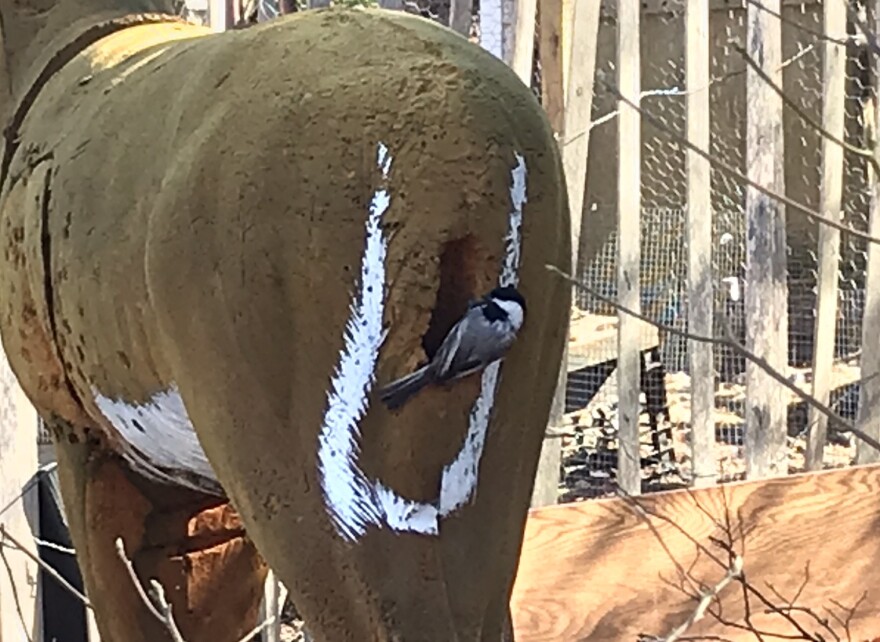So many things happened in the local bird world this week, a head-spinning assortment of headline material, that I’m having a hard time zeroing in on a topic. A Yellow-billed Loon, only the second state record, was found at Race Point in Provincetown.
I learned of a new Bald Eagle nest somewhere in Barnstable, and a previously undiscovered Great Blue Heron rookery was found on the Upper Cape, likely the only one on Cape Cod. A rare Red Phalarope, an ocean-going sandpiper, washed up in Orleans and is now in the capable hands of Wild Care. But each of these pales in comparison to the significant ornithological discovery my son and I made, just this morning, of a pair of chickadees nesting in the butt of a fake deer…
Ok, so maybe this won’t be publishable in any of the scientific journals, but we thought it was pretty cool. As we often do, my toddler and I were walking the small, local powerlines behind our neighborhood this morning. Naturally, we were on a mission to retrieve the small plastic moose figurine we had lost the evening before. That’s right – against all odds, this story involves multiple plastic members of the deer family. In any case, in the course of retrieving the lost moose, we noticed some strange behavior by a pair of local chickadees, a bird my son knows well, as you might expect. They seemed weirdly interested in the posterior end of one of those life-sized, hard foam deer used for archery practice – this one stands guard behind a neighbor’s backyard chicken coop. As we watched, the birds were rapidly going in and out of the, um, orifice. This deer is not designed to be quite that anatomically correct – the chickadees had clearly excavated this body cavity themselves. Hence my proposal for a new neighborhood motto: East Harwich, where the chickadees are bold, and the deer are nervous….
Over the last few days there has been an explosion of nest building among the resident species, though mostly not in deer butts. While hiking at a favorite wetland spot in Chatham on Sunday, we watched a Red-breasted Nuthatch work over the marsh reeds for nesting material, chipping off flakes from last year’s phragmites stems and gathering them up in his tiny bill. When he had as many as he could carry, he made a beeline to his newly excavated nest hole in a dead fork of a multi trunked oak. I’ve seen others posting about White-breasted Nuthatches working on nests in their yards that same day. It’s like a nesting switch was flipped over the weekend.
In fact, Monday morning we watched from my son’s bedroom window as our local Blue Jay pair spent a few minutes gathering moss from the edge of our yard before disappearing over the houses across the street. Presumably they have competed the coarse outer frame of sticks and are now adding the soft interior material for cushioning the eggs. Moss is a popular nest material for several species, including chickadees. We haven’t found the actual nest location yet - Blue Jays are well known for being loud to a fault, but they get pretty quiet when nesting. As habitual nest robbers themselves, they well know the importance of keeping your nest location secret from predators.
For those looking for homeschool activities, following pairs of birds around, noting their behaviors, and looking for nests is a great science, or at least natural history activity for kids of all ages. If you have a nest you can follow through the season, sign up for Cornell’s NestWatch and submit your results, making them available to researchers. But if you notice a pair of chickadees sniffing around – watch your back. You don’t want to end up the butt of any jokes.








